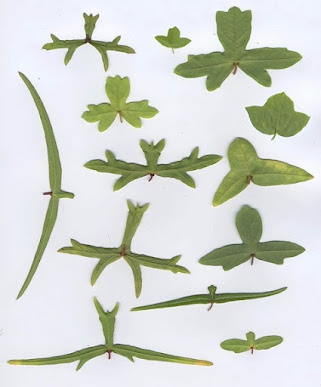 |
| The color-changing and dropping of leaves is a seasonal process. |
Defined as the study of cyclic and seasonal natural phenomena, phenology is critically important in relation to climate and both plant and animal life. The timing of biological events can be shifted earlier or later by climate variations in temperature, precipitation, and sunlight. Events such as migration, egg laying, flowering, and hibernation are all influenced by these climatic factors.
 |
| Early blooming plants support early spring-emerging insects. |
While ecosystems are resilient enough for normal phenological variations, major shifts may indicate a change in normal climate patterns. These shifts can give rise to larger problems, since all life is interconnected. In many areas of the world spring events are occurring earlier and fall events are occurring later than they have in the past. But since not all species are changing at the same rate or direction, mismatches are bound to occur.
 |
| Nectar-producing flowers need to bloom in time for migrating hummingbirds. |
Flowers that bloom too early leave fewer nectar sources for migrating hummingbirds. Early flowering also leads to earlier fruiting, which typically yields lower quality fruit for fruit-eating migrating birds. Many bird species time their nesting and egg-laying efforts so their eggs hatch when insects are available. The emergence of insects depends on leaf out of their host plants. One seemingly subtle shift in plant phenology can change entire food webs.
 |
| Nesting and egg-laying are timed to coincide with insect emergence. |
Some examples of phenology studies that are easy to perform include the date of emergence of flowers and leaves, the first appearance of migrating birds, the first flight of butterflies, the dates of egg-laying of birds and amphibians, and the date of leaf color changes and dropping in deciduous trees. Studies can be formal or informal, and while many citizen scientists note these kinds of changes over the years, imagine if hundreds of thousands of them standardize their recording techniques and enter their data into a database that anyone can access. This describes Nature’s Notebook, a web-based monitoring program of the USA National Phenology Network (www.usanpn.org).
 |
| Anyone can contribute to the USA National Phenology Network's database. |
Nature’s Notebook’s vision is to “provide data and information on the timing of seasonal events in plants and animals to ensure the well-being of humans, ecosystems, and natural resources.” Its mission is to “collect, organize, and share phenological data and information to aid decision-making, scientific discovery, and a broader understanding of phenology from a diversity of perspectives.” Scientists use phenological data for critical applications such as understanding the timing of ecosystem processes like carbon cycling, assessment of vulnerable species and ecological communities, and invasive species and forest pest management. Phenological data are immensely useful indicators of change, so considering joining the movement to document the changes you see in nature’s calendar, and watch what happens!















































